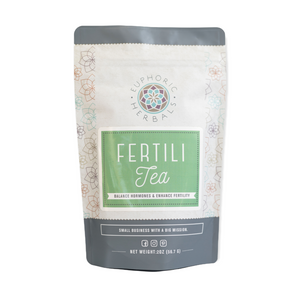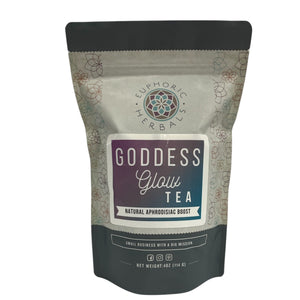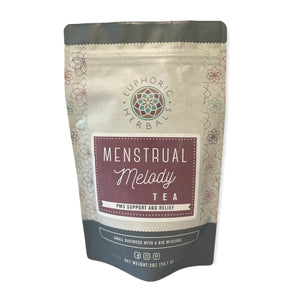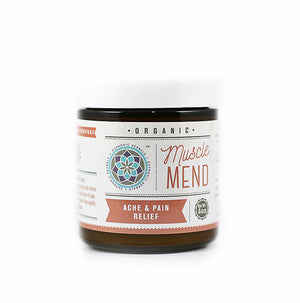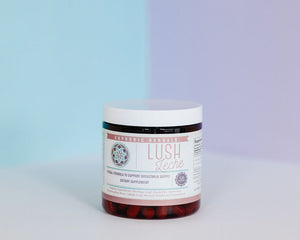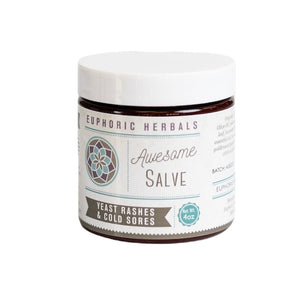If you love using herbs and natural remedies for health, it's only natural to want to share that with your children, too. But with all the information (and misinformation) out there, it can feel overwhelming to figure out what's safe for your kids and what's not.
Herbs have been a part of family life and wellness for thousands of years. In fact, it's only been relatively recently that they have been (falsely) looked at as something dangerous.
The truth is herbs are gentle yet effective and work in harmony with children's bodies, rather than upsetting the balance of their systems. They can be used for everyday wellness, everyday ailments, and to complement conventional medicinal treatments.
With that in mind, here's more about common and gentle herbs often used for kids and some simple guidelines for safety.
General Guidelines
The main thing to remember when introducing your little ones to herbs is that their bodies are smaller and more sensitive than yours.
Renowned herbalist Rosemary Gladstar writes that almost any herb is safe for children as long as the dosage is adjusted according to their size and weight. There are very few herbs that should never be used. (Gladstar. Herbal Recipes for Vibrant Health, pg. 163)
However, that doesn't rule out the chance of an allergic reaction, so she recommends doing a small skin test when you introduce a new herb.
You can do this by making a tea with the herb and "painting" a small patch of it onto your child's arm when it cools. If no adverse reaction happens within 24 hours you can start with small amounts internally. (Gladstar, pg. 164)
Always pay attention to how your child reacts to herbs and remedies. Ask how they feel and note any changes in behavior. Often, your child is the one who will be able to tell you if an herb is helpful or not.
Of course, be sure to take your children to see a medical professional for serious conditions.
Safe Herbs for Kids
Oatstraw
Oatstraw is one of the mildest herbs- both in action and in taste. Slightly sweet, it's a nourishing herb that's high in minerals and trace nutrients.
Oatstraw is a tonic herb and one that can be incorporated into daily life. It will especially strengthen your child's nervous system, helping with mood, emotional fatigue, and even trouble sleeping. (1)
Chamomile
Chamomile is very popular as an herbal tea for stress and sleep among the adult population. It's also widely recognized by herbalists as one of the best all-around herbs for kids.
Most children enjoy its sweet taste, and it can be especially helpful in times of stress, nervousness, overstimulation, upset stomach, and trouble sleeping. A cup of chamomile tea or Slumber Tea can be very soothing before bedtime.

Lavender
Lavender is another herb with gentle, calming properties. It can help with anxiety, stress, restlessness, and sleeplessness but will probably be preferred by your children as a sachet under the pillow or an essential oil rather than a tea.
Lavender is also great in skincare to soothe irritated and hot skin. It usually benefits even sensitive skin and helps burns, scrapes, and dry skin. If you don't have time to make your own salves, try lavender in this Baby Balm.
Elderberry
Elderberry has soared to popularity as an immune-boosting herb for cold and flu season. Besides being beneficial for children's immune systems, it's one of the more easily accepted remedies, especially in syrup or gummy form.
Elder flowers are lesser known than the berries but can be made into a tea to help sweat out and lower fevers. Elderberry combines well with other immune-boosting herbs, and you can get your whole family drinking something like this Immuni Tea.
Lemon Balm
Another gentle and tasty herb, Rosemary Gladstar calls lemon balm "a beloved herb for children." She uses it to help with restlessness and as an aid for ADD and ADHD. (Gladstar. Medicinal Herbs: A Beginner's Guide, pg. 158)
Lemon balm is calming, alleviates stress, can ease headaches, and also has antiviral properties. It's especially good for children who don't like to slow down and those who get 'overtired and wired.' Combine it with oatstraw and chamomile for a soothing bedtime tea.
Nettle
Nettle is a green and nourishing herb packed full of nutrients, especially easily assimilated iron. It can be eaten as a 'superfood' or added to smoothies and recipes to pack in some extra vitamins and minerals.
In fact, you may need to 'hide' it in food because nettle has a strong, green flavor that not all children will like. However, it's very good for them and is frequently used in an iron tonic for both pregnant women and growing children.
Slippery Elm
Slippery elm comes from trees native to North America. It's harvested from the inner bark, and true to its name has a slippery texture when mixed with liquid. This makes it ideal for soothing irritated tissues: sore throats, irritated digestive tracts, respiratory issues, coughs, dry mouth, etc.
Slippery elm is also highly nutritious and has a mild, sweet flavor. You can make it into a nutritious porridge or use it as a tea or lozenges.
Marshmallow Root
Marshmallow root has benefits similar to those of slippery elm. It contains a high amount of mucilage that makes it slippery and almost gelatinous when mixed with cold water and other liquids.
Marshmallow is soothing for skin, dry coughs, sore throat, irritated digestion, and more. You can turn it into a fun treat by making homemade marshmallows using marshmallow root.
Peppermint and Spearmint
Peppermint is a classic herb for upset stomachs. It can be used to make a mild tea for children with upset bellies or used as an oil to rub (diluted) onto their tummies.
Spearmint is sometimes more of a preferred herb for children. It has similar properties to peppermint but a milder and sweeter flavor. Besides digestion, spearmint can calm hyperactivity and anxiety (especially when blended with lemon balm).
Either mint can be infused in hot or cold water, perhaps with lemon and honey for a "lemonade."
Calendula and Plantain
Both calendula and plantain are excellent herbs for the skin. They are handy to have on hand for the many cuts, scrapes, bumps, and bruises active children tend to collect.
Calendula is especially good for sensitive skin and soothes a wide range of skin ailments, including cradle cap and diaper rash. Plantain can be used as a poultice or salve for all manner of bug bites, bruises, and skin eruptions. Both are in this multi-purpose Super Salve.
Tips for Dosing
So you know that children should generally have smaller doses of herbs than adult, but how do you figure out how much to give them?
One method for working this out is a calculation called Young's Rule: Add 12 to your child's age, then divide your child's age by the total you just arrived at.
For example, suppose your child is four years old. The calculation would work like this: 4 + 12 = 16 >> 4 / 16 = 1/4. The dose for a four year old would therefore be 1/4 of the normal adult dosage. (Gladstar. Herbal Recipes, pg. 169)
This is a general rule to go by, but much depends on which herbs are used, the child's individual constitution, and the nature of any illness or condition. Nourishing herbs like oatstraw and nettle can usually be taken in food-like amounts.
Getting Kids Interested in Herbs
Of course, one of the main struggles is not whether herbs are safe but how to get your children to take something that's good for them.
Naturally sweetened recipes like glycerites and syrups are usually more accepted by children. You can also get creative and mix herbs or herbal teas into juice, smoothies, lemonade, popsicles, etc.
Inviting your kids to take part in growing and harvesting herbs as well as making herbal creations can help, too. When they play a role in making the recipes or planting the herbs, they'll likely be more excited about eating or drinking the end product.
And if all else fails, you can always sneak herbs into soups, casseroles, and other recipes!






















































